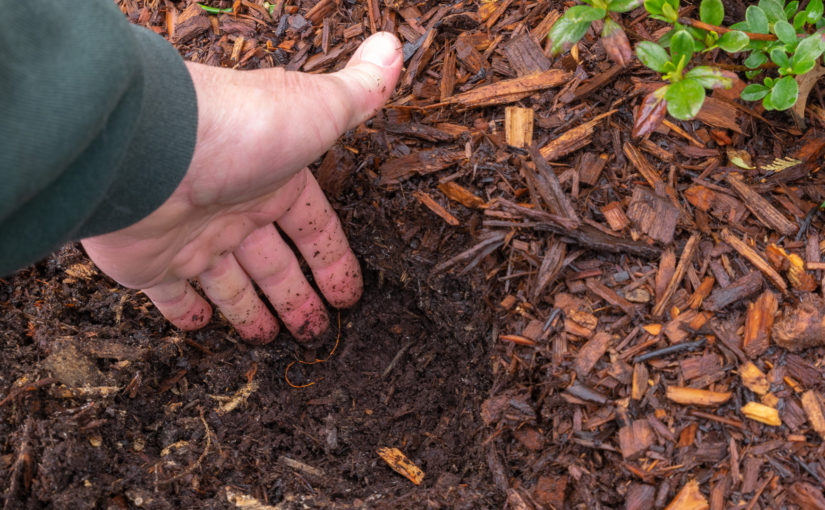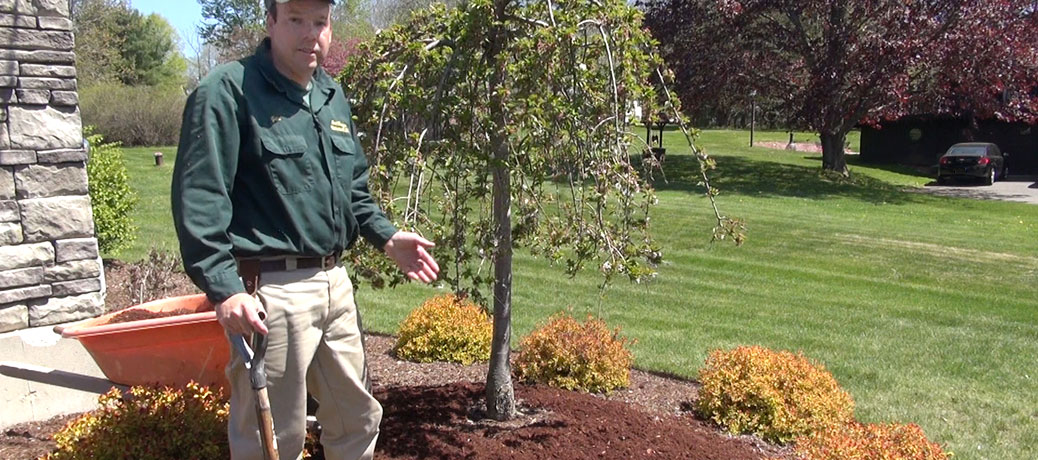This spring I visited a home that had recently been mulched and was shocked at how deep the mulch was and how little preparation went into the job.
Weeds that had been covered in mulch poked through and the mulch was easily four to five inches deep.

I recommend carrying a soil knife and removing perennial weeds, such as Dandelion, down to the root before mulching.
This garden should not have been mulched; the time and expense should have gone into weeding.

Deep mulch leads to unhealthy plants and looks unnatural. On some jobs, I have to remove deep, old mulch before applying new.
Once a garden is established an inch of mulch is all you need.
Benefits of light mulching include:
- Mulch won’t require yearly turning.
- Oxygen can easily enter the soil.
- Mulched over tree bark won’t become an entry point for insects, disease, and rodents.
- Water easily filters through.
- Less mulch looks more natural, like a coating of leaves on the forest floor.
- Plant roots grow into the soil instead of growing into mulch that quickly dries.
Whether you’re a contractor or a homeowner try not applying mulch one year and see the difference it makes. Your plants will be healthier with significantly less work and expense.
Below is a landscape I mulched this spring by applying just enough mulch to do the job. No more. No less.

Spread less mulch for a more healthy landscape and sometimes you don’t need to add any mulch at all.

